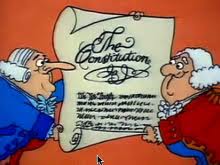What is history? Many people describe history as the study of the past, a huge
collection of names, dates, and facts that you are expected to memorize. The goal of
this assignment is for you to discover other meanings of history and to recognize why it
is important to study history.
In this project, you will think about the meaning of history by describing and illustrating
several events from your own life, finding a witness to provide another description of
one of those events, and thinking about the similarities and differences between the two
descriptions.
Part I: Snapshot Autobiography
1) Take blank, regular size piece of paper and fold it so that it forms 3 panels (like a
letter you’d mail). Counting front and back, you should have 6 panels.
2) The first panel is the cover for your Snapshot Autobiography.
• Give your autobiography a title, for example, “Snapshots from the Life of Kathy.”
• You may illustrate it if you wish.
3) On the back panel write a brief “About the Author” section. Include your name, place
and date of birth, and anything else you want people of know about you. You may
include a self-portrait if you like.
4) This leaves four panels. In the first of these panels, write about your birth. In the other
three panels, you are going to write about important events that have shaped you as
a person. This means that you are selecting a total of three important events (besides
your birth) from your life.
• You will be interviewing another person about one of these events, so make sure
to pick at least one event that someone else knows about.
• For each of these three events, write a narrative (story) describing what
happened. Make sure you describe it from start to finish. Pretend that someone
who doesn’t know you will be reading your story and trying to understand it. Be
sure to include details!
• Illustrate each event with a small, hand-drawn picture.
Part II: Homework: Snapshot Biography – Another Perspective
Now is your chance to talk to somebody else who remembers one of the important events you
chose.
1) Select one of the events you wrote about.
2) Find somebody who remembers that event. For example, a parent, grandparent, sibling,
or friend who will be familiar with the event you described.
3) Ask the person you chose to tell you their version of the story. In order to make sure that
you are getting their version, ask them an open question about the event, for example,
“Mom, do you remember when Jane and I started being friends in fifth grade? Can you
tell me what you remember about when we met?”
• Take careful notes of the interview. Pay attention to which parts of their story are
different from your own.
• Make sure to thank the interviewee for their participation in this project!
Name of the person being interviewed: ____________________________________
Relation to you: ____________________
Event from Snapshot Autobiography they will be corroborating (cross-checking):
______________________________________________________________________
Interview Notes
____________________________________________________________________________
____________________________________________________________________________
____________________________________________________________________________
____________________________________________________________________________
____________________________________________________________________________
____________________________________________________________________________
____________________________________________________________________________
____________________________________________________________________________
What do the two stories have in common?
____________________________________________________________________________
____________________________________________________________________________
____________________________________________________________________________
____________________________________________________________________________
What is different about the two stories?
____________________________________________________________________________ ____________________________________________________________________________ ____________________________________________________________________________ ____________________________________________________________________________ ____________________________________________________________________________ ____________________________________________________________________________ ____________________________________________________________________________ ____________________________________________________________________________







